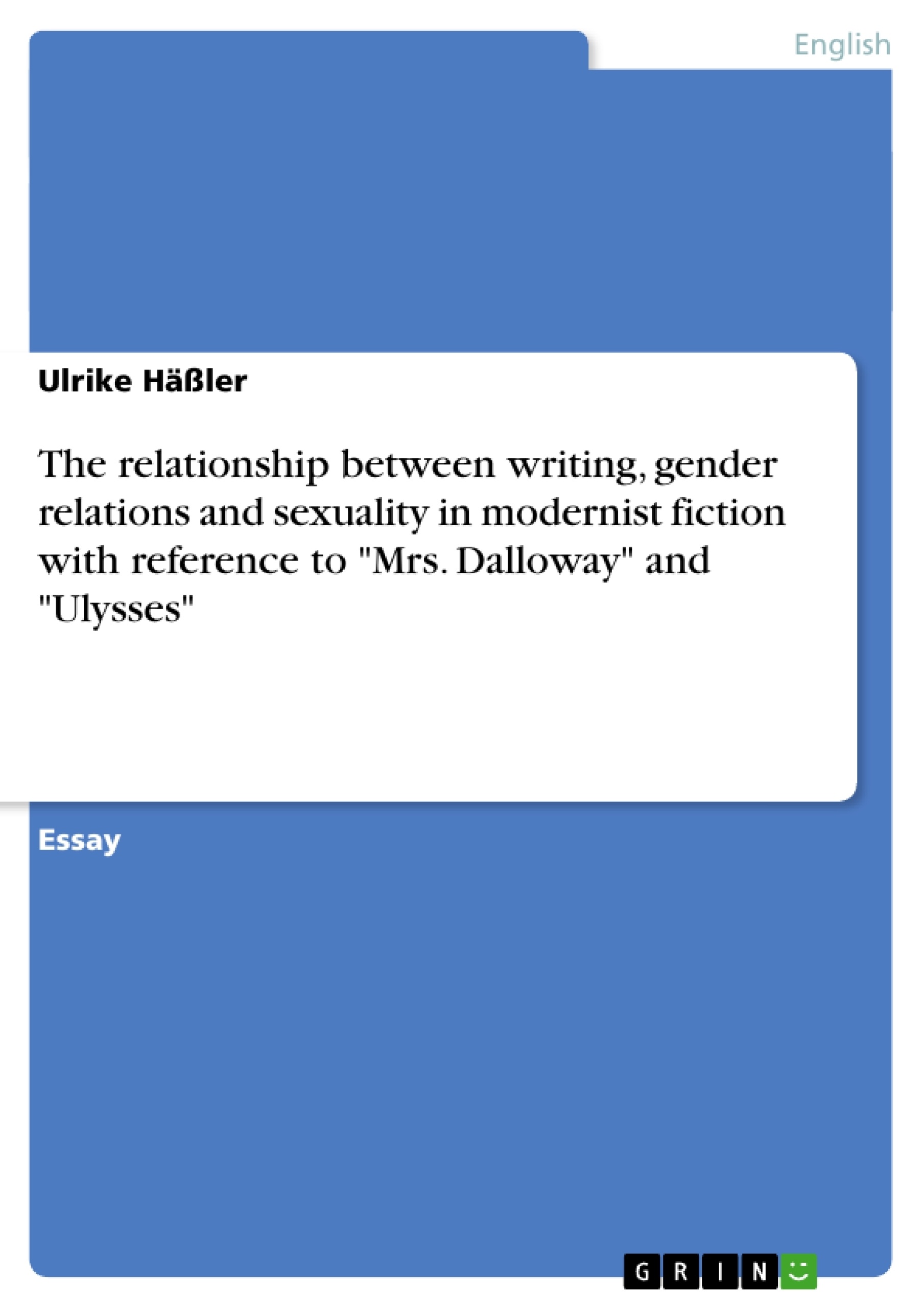The modernist writers were deeply influenced by the changing gender relations and the attitude towards sexuality within society, which is reflected in their literary works. The patriarchal society was more and more questioned, particularly by an awakening feminist movement, and sexuality became a present issue of discourse after new theories had been introduced. Virginia Woolf’s Mrs.Dalloway and James Joyce’s Ulysses are discussed as two examples of a modernist novel in order to explain in which ways modernist writers dealt with the aspects of gender and sexuality.
Inhaltsverzeichnis (Table of Contents)
- The relationship between writing, gender relations and sexuality in modernist fiction with reference to Mrs. Dalloway and Ulysses
- Gender and sexuality in modernist fiction
- The patriarchal society
- Linguistic difference
- Virginia Woolf's Mrs. Dalloway
- The female sentence
- Differing values
- The female plot
- Search of identity
- Clarissa Dalloway's search for identity
Zielsetzung und Themenschwerpunkte (Objectives and Key Themes)
This text examines the relationship between writing, gender relations, and sexuality in modernist fiction, specifically through the analysis of Virginia Woolf's "Mrs. Dalloway" and James Joyce's "Ulysses." The main objective is to explore how modernist writers addressed the changing gender roles and attitudes towards sexuality in their time.
- The influence of patriarchal society on gender stereotypes and language.
- The development of a distinct female voice in literature.
- The representation of the search for identity within the context of gender and sexuality.
- The impact of war and post-war societal changes on gender roles.
- The use of stream of consciousness as a literary device to explore the female experience.
Zusammenfassung der Kapitel (Chapter Summaries)
The text begins by examining the broader context of gender and sexuality within modernist literature, highlighting the influence of patriarchal society and the emergence of feminist thought. It then focuses on Virginia Woolf's "Mrs. Dalloway," analyzing her portrayal of the female experience, the challenges faced by female writers in a male-dominated literary landscape, and the development of a distinct female voice and narrative structure. The text explores Woolf's use of stream of consciousness to portray the protagonist's inner thoughts and feelings, and how this style contrasts with traditional, linear narrative structures. The text also examines the characters of Septimus Smith and Clarissa Dalloway, exploring their respective struggles with identity and societal expectations within the context of post-war Britain.
Schlüsselwörter (Keywords)
The key terms and concepts explored in this text include: modernist fiction, gender relations, sexuality, patriarchy, feminism, female voice, stream of consciousness, narrative structure, identity, post-war society, and literary representation.
- Citation du texte
- Ulrike Häßler (Auteur), 2001, The relationship between writing, gender relations and sexuality in modernist fiction with reference to "Mrs. Dalloway" and "Ulysses", Munich, GRIN Verlag, https://www.grin.com/document/43572



